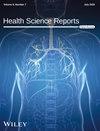Time Interval From Coronary Angiography to Bypass Surgery and Risk of Postoperative Acute Kidney Injury: A Cross-Sectional Study
Abstract
Background and Aims
The association of the time interval between coronary angiography and coronary artery bypass surgery (CABG) with postoperative acute kidney injury (AKI) remains uncertain. We evaluated and compared the risk of developing AKI after CABG in two groups of patients with a time interval between coronary angiography and CABG of less than 7 days and more than 7 days.
Methods
This cross-sectional study was conducted on 171 patients who needed to undergo CABG for the first time within 1 month after coronary angiography. Overall, 85 patients underwent operation within 7 days of angiography (Group A) and 86 within 7 days to 1 month after angiography (Group B). AKI was defined using Risk, Injury, Failure, Loss of kidney function, and End-stage kidney disease (RIFLE) criteria.
Results
Median preoperative biomarkers (serum creatinine, blood urea nitrogen) were similar between groups and did not significantly change postoperatively. The incidence of AKI was 5.8% (n = 10), with 4.7% (n = 8) in the Risk class and 1.2% (n = 2) in the Failure class per RIFLE. Despite a numerically higher AKI rate in Group A (8.2%) compared to Group B (3.5%), this difference did not reach statistical significance. Notably, patients who developed AKI had significantly lower preoperative left ventricular ejection fraction compared to those without AKI (40% vs. 50%, p < 0.01).
Conclusion
While a 7-day interval between angiography and CABG did not significantly impact AKI incidence, we observed a non-significant trend toward higher AKI rates with shorter intervals. Our limited sample size and low overall AKI incidence (5.8%) warrant larger studies to clarify this relationship, particularly in patients with reduced left ventricular function.

 求助内容:
求助内容: 应助结果提醒方式:
应助结果提醒方式:


